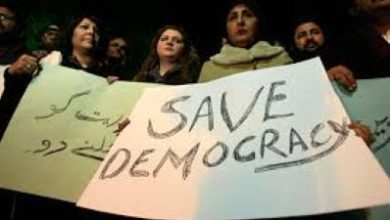Observations of an Expat: Russia and Ukraine

Vladimir Putin claims, “Ukraine is not a real country, it is an artificial creation.”
By Tom Arms | London
“Ukraine is not a real country,” claims Vladimir Putin. “It is,” he has repeatedly stated, “an artificial creation” that is historically and culturally part of Russia.
If you go back far enough—the 9th century—he has a point. Kyiv was the cradle of what became the Russian Orthodox Church which for centuries defined Russian nationalism.
But since the mid-13th century, borders, allegiances and political alignments have been constantly shifting.
It started with the Mongol invasion which led to the heirs of Genghis Khan ruling the Principality of Moscow until the 15th century. Most of Ukraine became part of the Polish-Lithuanian Commonwealth which lasted until a Cossack rebellion in 1648.
The 1648 rebellion established the Cossack Hetmanate which lasted a little over a century and is viewed as the foundational state by Ukrainians. The Hetmanate rejected the feudal system of Poland and the authoritarianism of Russia. The leadership was not hereditary, but was elected by a warrior class on the basis of merit.
Initially the Hetmanate’s main enemy was Poland. It was the era of religious wars and the Cossacks were Orthodox Christians. So they turned to their co-religionists in Moscow for protection. Big mistake. Russia gradually increased their control over Ukraine and in 1764 Catherine the Great simply abolished the Hetmanate and imposed direct imperial rule.
From that point on Ukraine’s history was a story of Russian domination with the occasional burst of independence. The biggest came with the collapse of the Tsar in 1917. The problem, however, was that the Ukrainians themselves were divided. The Bolsheviks quickly crushed the half dozen independent Ukrainian states that sprang up.
Ukraine then became a nominally independent country within the Soviet Union. In reality it was part and parcel part of the USSR and it suffered more than any other part of the Soviet Union under Soviet rule. Two million-plus Ukrainians were arrested and deported to either Siberia or Kazakhstan. Up to 7 million died in the Holodomyr famine of 1932-33 caused by Stalin’s forced collectivisation. The Ukrainian language, culture and customs were suppressed and an estimated one million ethnic Russians were moved into Ukraine in an attempt to dilute the Ukrainian identity.
Not surprisingly, many Ukrainians initially welcomed the invading Germans as liberators. Many Ukrainians joined the German army; not because they were pro-Nazi but because they were anti-communist and anti-Russian. The resistance to Soviet rule continued until 1954 and led to a fresh wave of deportations in the postwar years.
When the Soviet Union collapsed in 1991, Ukraine was quick to declare itself independent. And the move had overwhelming support. A referendum on December 1, 1991 revealed that 90 percent of the population favoured independence. This figure could only have been achieved if a large proportion of ethnic Russians had voted to split with Moscow.
As if to seal the deal, the Soviet foreign minister, Eduard Shevardnadze, resigned his Kremlin post to become Ukraine’s first president.
There were, of course, transitional problems. The biggest being the troubled history of Ukraine-Russian relations which left the Ukrainians uneasy about future Russian intentions. Fortunately, the Soviets left behind a large portion of their nuclear arsenal. Ukraine was—in 1991—the world’s third largest nuclear power. It decided to exchange its nuclear weapons for the 1994 Budapest Memorandum in which Russia, Britain and the US agreed to respect Ukrainian sovereignty and the integrity of its borders. Then in 1997, Moscow and Kyiv signed a Treaty of Friendship in which Russia again guaranteed Ukraine’s borders with a special mention for Crimea.
2000 saw the accession of Vladimir Putin and post-Soviet frictions began. The two sides couldn’t agree on the division of the Black Sea fleet or the status of Crimea’s strategic port of Sevastopol. Ukraine became heavily dependent on Russian gas and Putin started to use that dependence to extract political concessions. In response, the Ukrainians start to move closer to the West. They applied to join the EU and NATO.
2004 brought the Orange Revolution. Following a rigged presidential election favouring pro-Russian candidate Viktor Yanukovych, mass protests led to a revote and the victory of pro-Western Viktor Yushchenko. This alarmed the Kremlin. In 2006 and 2009 Russia cut gas supplies. As the pipeline that crosses Ukraine also feeds Western Europe, the move disrupted energy supplies across the continent.
There was a temporary thaw from 2010 to 2013 after pro-Russian Yanukovych returned to power. But tensions re-emerges when Ukraine prepared to sign an EU Association Agreement in 2013. In November 2013 Yanukovych abruptly rejected the EU deal under Russian pressure. Massive protests (Euromaidan) erupted. Yanukovych attempted a crackdown. It failed and he fled to Moscow.
In March 2014 Russia invaded and annexed Crimea following a disputed referendum. The following month Russian-backed separatists seizes parts of Donetsk and Luhansk in eastern Ukraine and war starts in the Donbas region. Ukraine dates the start of the war from 2014.
There were attempts to broker a peace deal in 2014 and 2015. These were called the Minsk Agreements. They both failed and the fighting continued in the Donbas region with the West supplying Ukraine with weapons. Ukraine cut economic, political and cultural ties with Russia.
On April 21, 2019, TV comic Volodomyr Zelensky won the Ukrainian presidential election on a pledge to end corruption and negotiate a peace deal with the Russians. A few months later the new president met with Putin in Paris and agreed a prisoner exchange, ceasefire and a renewed commitment to the Minsk Agreements. The prisoner exchange went ahead. The ceasefire quickly broke down and Putin continued to ignore the Minsk Agreements.
In the autumn of 2021, Russia started building up its forces along the border with Ukraine. The West warned Putin against invasion. The Russian leader denied that he had any such plans. Then on February 24, 2022, Russia launched its “special military operation”—also known as the invasion of Ukraine.
_____________________
 Tom Arms is foreign editor of Liberal Democrat Voice. He is also a regular contributor to “The New World” and is the author of “The Encyclopedia of the Cold War” and “America Made in Britain.”
Tom Arms is foreign editor of Liberal Democrat Voice. He is also a regular contributor to “The New World” and is the author of “The Encyclopedia of the Cold War” and “America Made in Britain.”
Read: Observations of an Expat: The Vote
.




